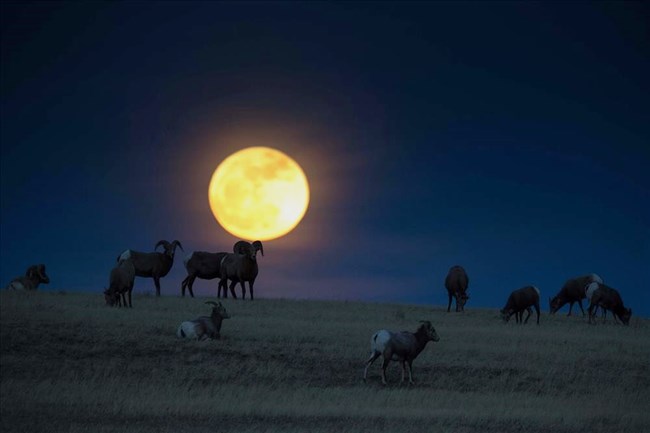
The National Park Service strives to understand, maintain, restore, and protect the inherent integrity of the natural resources, processes, systems, and values of the parks. This includes protecting and preserving migratory pathways, watersheds, air quality, and geologic activity. A naturally dark night sky is a resource integral to many natural processes. Many of the darkest night skies in the country are found within national park boundaries. With the documented loss of night sky quality over the last five decades to light pollution, this resource has become globally significant (Falchi, et. al, 2016).
We generally think of dark night skies as a scenic resource, valued by professional and amateur astronomers as well as casual stargazers. Sometimes forgotten is the importance of natural darkness for wildlife. Nearly half the species on Earth are nocturnal—active at night instead of during the day. Further, all species, nocturnal and diurnal have evolved with the natural cycles of dark and light. Just like people need natural darkness for sleep and the restorative benefits that sleep provides, thousands of diurnal species (most active during the day) also depend on natural lightscapes for sleep and restorative benefits too. Many species rely on natural patterns of light and dark to navigate, nest, mate, forage, hide from predators, and cue behaviors.
The addition of artificial light into the environment alters natural light patterns, and impacts ecological function, resulting in substantial impact to certain species. For example, migrating passerine birds reference stars to fly at night and can be disoriented by city lights and towers. Insects can be drawn in from great distances to even a single light, significantly reducing population levels and altering food levels for other wildlife.
Sea turtle hatchlings orient toward the brightest light on the beach, but instead of being drawn to the safety of sparkling waves on the ocean, they are often drawn toward roads and parking lots, where they quickly perish. Fish may be deterred by artificial light in the water, which can act as an artificial barrier, disrupting natural movement patterns. And amphibians, with vision far more sensitive than that of humans, are prone to be disoriented by light. Changes to cave environments can have a similarly disruptive effect. Research into the ecological consequences of artificial night lighting is revealing numerous connections between light pollution and species disruption.
Dark night skies are also an air quality related value since air pollution affects the quality of the night sky. Just as air pollution diminishes visibility during the day, hazy air at night dims the stars and increases the impact of light pollution by scattering artificial light, resulting in a gray appearance to the night sky instead of sparkling stars on a black canvas.
References
- Falchi F, Cinzano P, Duriscoe D, Kyba CC, Elvidge CD, Baugh K, Portnov BA, Rybnikova NA, Furgoni R. The new world atlas of artificial night sky brightness. Sci Adv. 2016 Jun 10;2(6):e1600377. doi: 10.1126/sciadv.1600377. PMID: 27386582; PMCID: PMC4928945.
For more information on night skies as a natural resource, please visit our Google Scholar page and our Scientific Literature Review page. Both pages are updated on a regular basis.
Last updated: July 24, 2025
